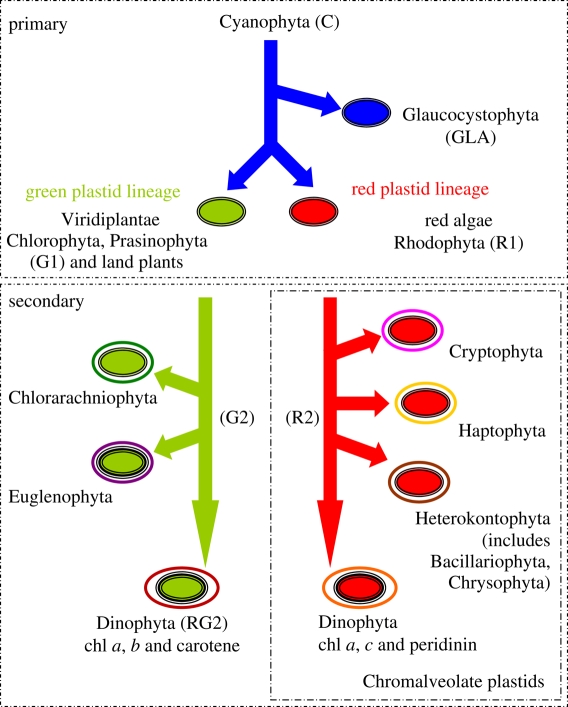Figure 1.
The series of endosymbiotic events in the evolution of phytoplankton. A single origin of plastids is hypothesized whereby a single-celled protist acquired and retained a free-living cyanobacterium. Over time, the cyanobacterium endosymbiont was reduced to a plastid and transmitted to subsequent generations. Three lineages arose from a primary engulfment event: the green plastid lineage (chl b-containing green algae and land plants, Viridiplantae), the red plastid lineage (chl c-containing red algae, Rhodophyta) and the Glaucocystophyta. Secondary endosymbiotic events occurred in both the green and red plastid lineages. In the green lineage, this gave rise to the Chlorarachniophyceae and Euglenophyceae. In the red plastid lineage, secondary endosymbiosis gave rise to the Chromalveolates, which include the Cryptophyceae, the Heterokontophyta (such as the Bacillariophyceae and Chrysophyceae), the Haptophyceae, the chl c and peridinin-containing Dinophyceae (but not the chl b-containing dinoflagellates or those that arose as a result of a tertiary endosymbiotic event). Only groups examined in this study are depicted in the figure.

